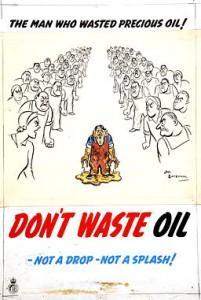
Corporate Average Fuel Economy (CAFE) is the regulatory framework the Obama administration is using to pursue its goal of increasing fuel efficiency of cars and light-duty trucks to 54.5 mpg by MY2025. If achieved, the administration says consumers will save more than $1.7 trillion at the pump ($8,200 of fuel per vehicle) and reduce U.S. oil consumption by 12 billion barrels over the life of the program. While a recent Wards Auto survey shows that a large majority of auto engineers and designers believe this target can be met, many outsiders are questioning whether the CAFE system could use an overhaul.
Interestingly, it’s not entirely out of the question to say that CAFE standards could be achieved without fully accomplishing all of their advertised goals. Auto manufacturers may be required to build more efficient vehicles, but the credits and loopholes built into the system mean that real-world results will lag behind. In fact, after accounting for various factors that inflate CAFE numbers, an Energy Collective article by John Miller shows that the on-road average fuel economy will likely be around 40 mpg.
A fleet-wide average of 40 mpg is pretty good, depending on your perspective. A July Wards Auto fuel economy index shows that average light-vehicle fuel economy hit a new record at 24.5 mpg. However, nearly doubling the current average on-road fuel economy will come at a cost. As stated in the aforementioned Energy Collective piece, the National Highway Traffic Safety Administration (NHTSA) estimates that internal combustion subcompact vehicles will cost $1,000-2,000 extra to meet the target. However, larger vehicles with hybrid powertrains could cost up to $10,000 extra. This additional cost would more than offset the projected $8,200 in fuel savings, not to mention the cost of replacing depleted battery packs as the vehicles age.
Even if automakers comply with CAFE standards, several variables will mitigate real world progress. The first of which is the fact that when driving costs less, people drive more. Still, the Energy Information Agency expects that gas consumption will remain flat as better fuel economy continues to outpace growth in highway travel. Speaking of gasoline consumption, CAFE is unlikely to result in net decreases in gas consumption or emissions as the population and number of vehicles on the road increases.
This isn’t to say that CAFE standards won’t work. They will (and have) reduced oil consumption, but as many have argued, a gas tax, like the ones used across Europe–in conjunction with emissions mandates–makes a lot more sense. It’s simpler, more effective, and arguably a far better solution for the market. Political feasibility, on the other hand, is entirely out of the question. And then there’s the SnackWell effect.
Image by Henry Mayo Bateman [Public domain], via Wikimedia Commons




